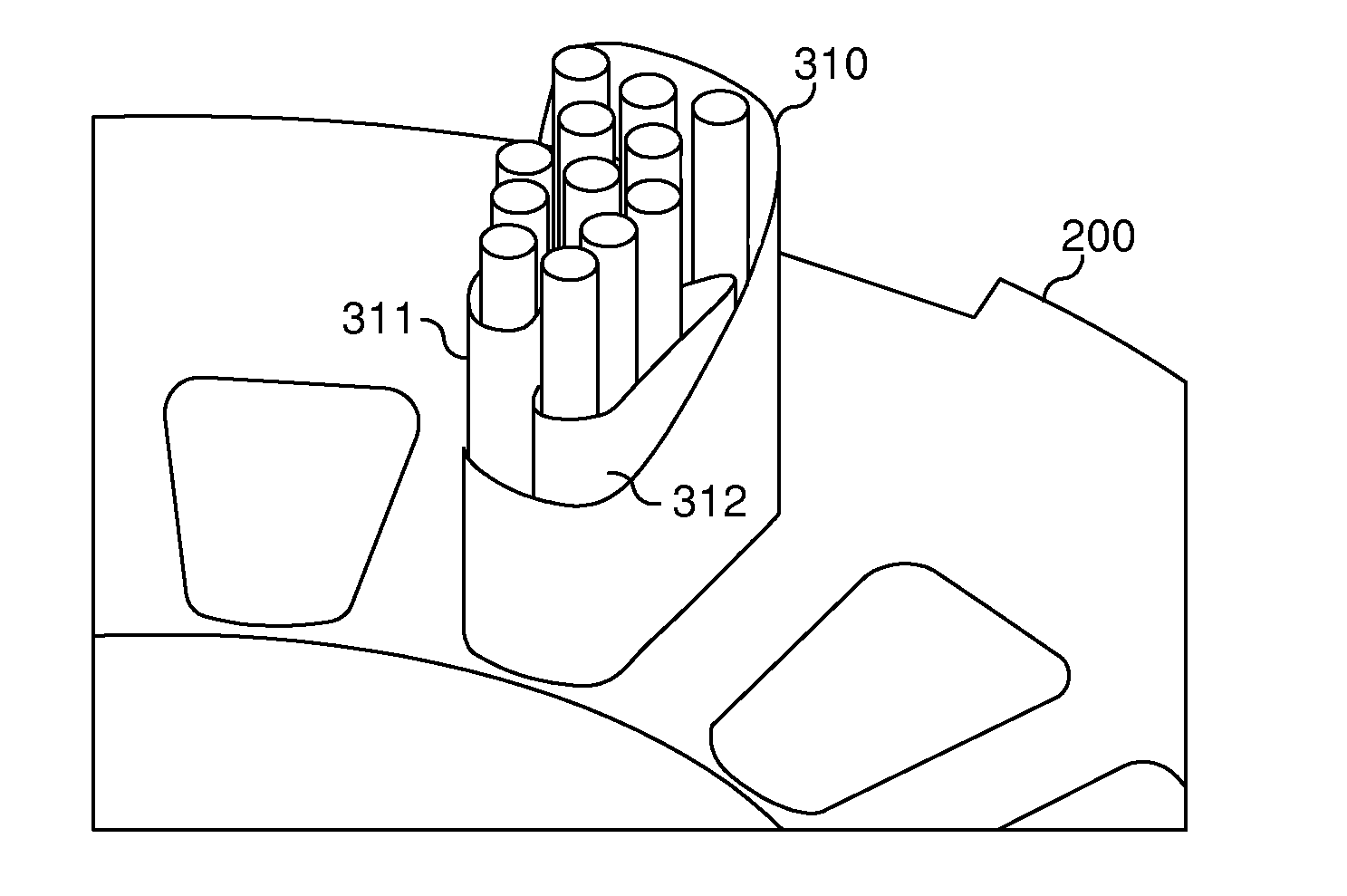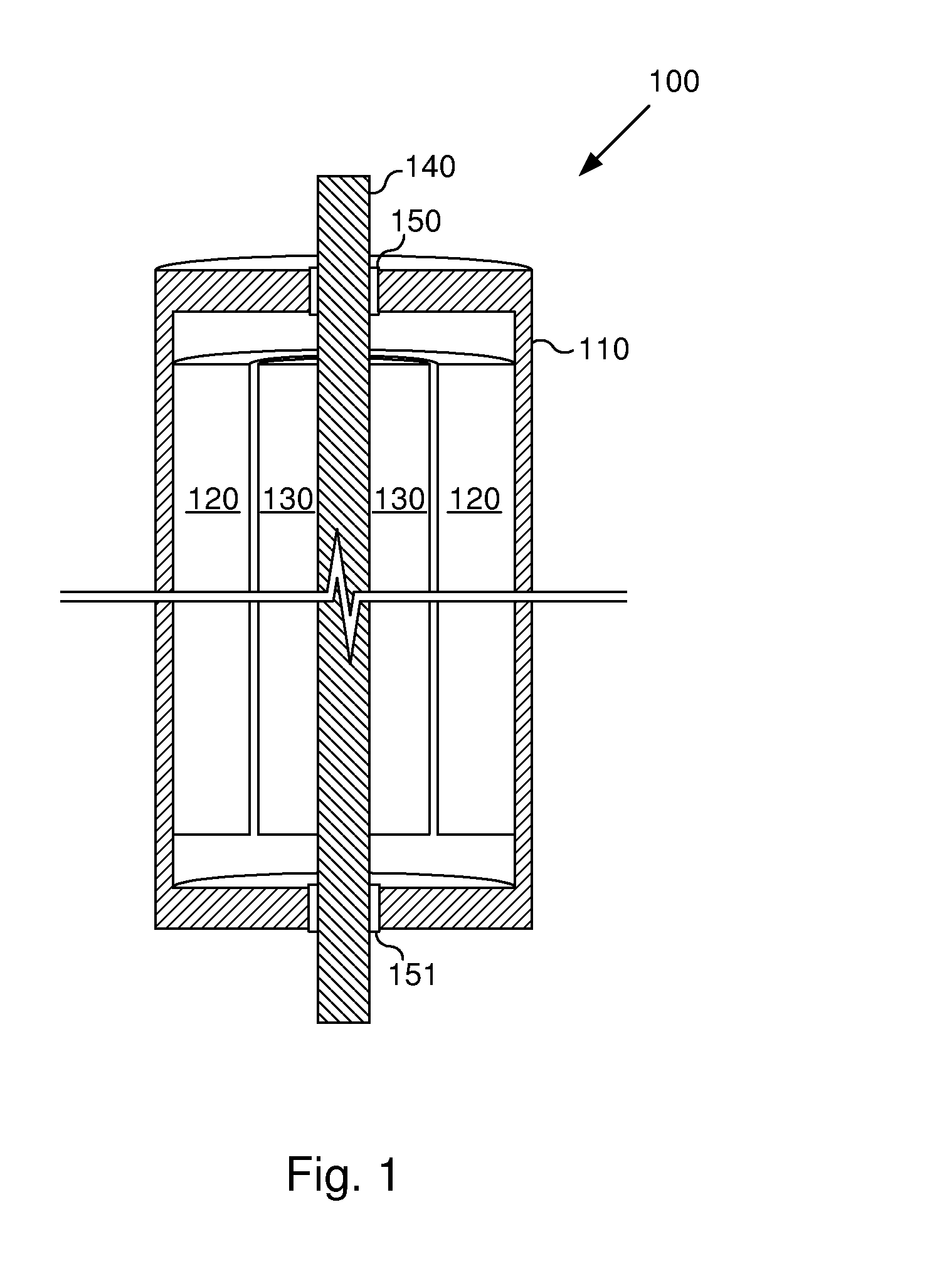Partial Discharge Resistant Motor Slot Insulation
a technology of partial discharge and motor slot, which is applied in the direction of windings, electrical appliances, dynamo-electric machines, etc., can solve the problems of void discharge, deterioration of insulation, and more likely to be discharged
- Summary
- Abstract
- Description
- Claims
- Application Information
AI Technical Summary
Benefits of technology
Problems solved by technology
Method used
Image
Examples
Embodiment Construction
One or more embodiments of the invention are described below. It should be noted that these and any other embodiments described below are exemplary and are intended to be illustrative of the invention rather than limiting.
As described herein, various embodiments of the invention comprise systems and methods for preventing partial discharge between turns of wire within a coil in an electric motor.
In one embodiment, a coil is constructed by threading wire through slots in a stator. Before the wire is threaded through the slots, an insulating slot liner is inserted into each slot. The slot liner will insulate all of the wires in the coil from the walls of the slot. Further, one or more tubular insulators are provided within the slot liner. Each of these additional tubular insulators will contain a different subset of the turns of wire that comprise the coil, and will insulate that subset of turns from other turns in the slot.
Referring to FIG. 1, a diagram illustrating the general struc...
PUM
 Login to View More
Login to View More Abstract
Description
Claims
Application Information
 Login to View More
Login to View More - R&D Engineer
- R&D Manager
- IP Professional
- Industry Leading Data Capabilities
- Powerful AI technology
- Patent DNA Extraction
Browse by: Latest US Patents, China's latest patents, Technical Efficacy Thesaurus, Application Domain, Technology Topic, Popular Technical Reports.
© 2024 PatSnap. All rights reserved.Legal|Privacy policy|Modern Slavery Act Transparency Statement|Sitemap|About US| Contact US: help@patsnap.com










